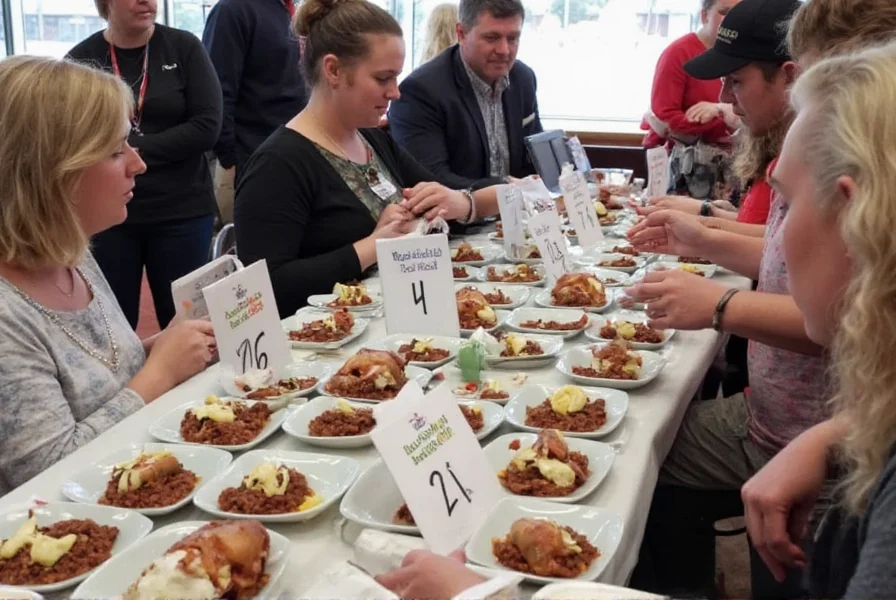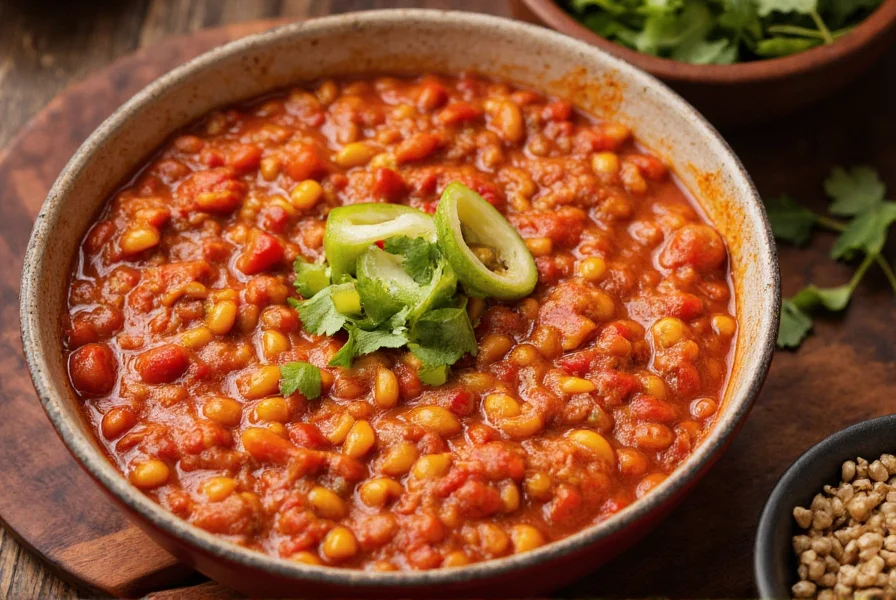Chili cookoffs have evolved from simple community gatherings to structured culinary competitions that attract both amateur enthusiasts and professional chefs. Whether you're planning to compete, organize, or simply attend your first event, understanding the fundamentals will enhance your experience and increase your chances of success.
What Defines a True Chili Cookoff?
Unlike casual potlucks, official chili cookoffs follow established guidelines that ensure fair competition. The International Chili Society (ICS), founded in 1990, sets the standard for competitive chili cooking with specific rules governing ingredients, preparation methods, and judging procedures. Most sanctioned events prohibit beans and pasta in traditional red chili categories, focusing instead on meat, spices, and liquid components.
Key Elements of Competitive Chili Cooking
Successful chili cookoff participants understand that competition chili differs significantly from everyday recipes. The judging environment requires careful consideration of multiple factors that affect how your chili will be evaluated.
Judging Criteria Breakdown
Judges typically evaluate chili using a standardized scoring system across several categories. Understanding these criteria helps competitors tailor their recipes for maximum impact.
| Judging Category | Weighting | What Judges Evaluate |
|---|---|---|
| Taste | 40% | Balance of flavors, spice level, meat quality, and overall deliciousness |
| Aroma | 20% | Appealing scent that invites tasting without overwhelming smoke or spice |
| Consistency | 20% | Proper thickness—not too runny or pasty—with even meat distribution |
| Color | 10% | Rich, appetizing red hue without discoloration or separation |
| Appearance | 10% | Overall presentation in the serving container |
Preparing for Competition: Essential Tips
Competing in your first chili cookoff requires more than just a good recipe. Proper preparation separates contenders from also-rans in competitive environments.
Recipe Development Strategies
Developing a competition-worthy chili recipe involves careful balancing of ingredients and flavors. Successful competitors often spend months refining their recipes through multiple iterations. Consider these professional tips when perfecting your entry:
- Start with high-quality meat—chuck roast or brisket provides optimal fat content and flavor
- Toast whole spices before grinding for deeper flavor complexity
- Balance heat levels to appeal to diverse palates while maintaining distinctive character
- Test your recipe under competition conditions to ensure proper consistency when served
- Document every ingredient measurement precisely for consistent results
Avoiding Common Competition Mistakes
Many first-time competitors make preventable errors that compromise their chances. Understanding these pitfalls helps you present your best possible entry:
- Over-spicing: Judges sample multiple entries, so extreme heat overwhelms their palates
- Inconsistent texture: Uneven meat distribution or improper thickening affects scoring
- Neglecting appearance: Competition chili should look as appealing as it tastes
- Improper temperature: Serving too hot or cold affects flavor perception
- Ignoring rules: Small violations like prohibited ingredients result in disqualification

Organizing a Successful Chili Cookoff
Hosting a well-run chili cookoff requires careful planning and attention to detail. Whether organizing a small community event or larger competition, these fundamentals ensure smooth operations.
Essential Planning Checklist
Successful organizers address these critical elements well in advance of the event:
- Establish clear rules and categories based on recognized standards
- Secure appropriate venue with adequate space, power, and facilities
- Recruit trained judges using official certification when possible
- Implement safety protocols for food handling and cooking equipment
- Develop efficient judging and scoring systems
- Plan for proper chili transportation and serving logistics
Chili Cookoff Culture and Community
Beyond the competition, chili cookoffs foster community connections and culinary traditions. These events often support charitable causes while celebrating regional food culture. Many competitors form lasting friendships through the shared experience of preparing and presenting their signature recipes.
Understanding proper etiquette enhances your experience whether competing or attending. Respect judges' decisions, offer constructive feedback to fellow competitors, and remember that most events prioritize community building alongside competition. The best chili cookoffs create welcoming environments where both novice and experienced cooks feel valued.
Getting Started with Your First Competition
If you're considering entering your first chili cookoff, start with local community events to gain experience before advancing to sanctioned competitions. Many organizations offer beginner divisions with less stringent requirements. Connect with experienced competitors who often willingly share advice with newcomers to the competitive chili circuit.
Frequently Asked Questions
What ingredients are prohibited in official chili cookoffs?
Most sanctioned chili cookoffs following ICS rules prohibit beans, pasta, vegetables, and fillers in traditional red chili categories. Approved ingredients typically include meat (beef, game, or poultry), spices, liquid components, and thickening agents. Specific rules vary by competition, so always review the event guidelines before preparing your entry.
How much chili should I prepare for a competition entry?
Standard competition requirements typically call for 1-2 gallons of finished chili, depending on the event size and number of judges. Most competitions require enough for 30-50 individual tasting portions. Always confirm the specific quantity requirements with the event organizers, as insufficient volume can lead to disqualification.
Can I use pre-made spice blends in competitive chili cooking?
Yes, but with limitations. Most competitions allow commercial spice blends, though top competitors typically create custom blends from individual spices. Some high-level competitions restrict certain pre-made blends or require disclosure of all ingredients. Using whole spices that you toast and grind yourself often provides a competitive edge in flavor complexity.
What's the difference between a chili cookoff and a chili festival?
A chili cookoff specifically refers to a competitive event where entries are judged against each other. A chili festival typically describes a larger event that may include a cookoff competition but also features vendor booths, entertainment, and non-competitive chili sampling. Many festivals incorporate official cookoffs as a central component while offering additional activities for attendees.
How do I find chili cookoffs to enter in my area?
Check with local community centers, chambers of commerce, and parks departments for community events. For sanctioned competitions, visit the International Chili Society website which maintains a calendar of official events. Social media groups dedicated to competitive cooking and local foodie communities often share information about upcoming cookoffs. Many events also advertise through regional food publications and radio stations.











 浙公网安备
33010002000092号
浙公网安备
33010002000092号 浙B2-20120091-4
浙B2-20120091-4